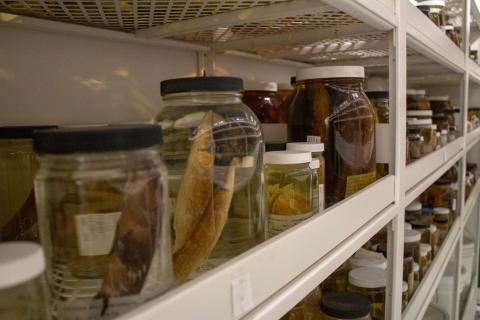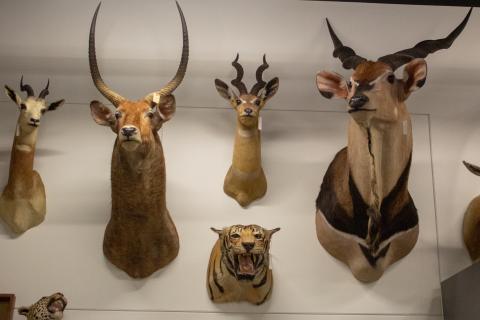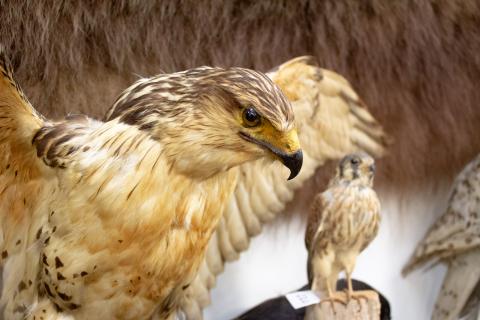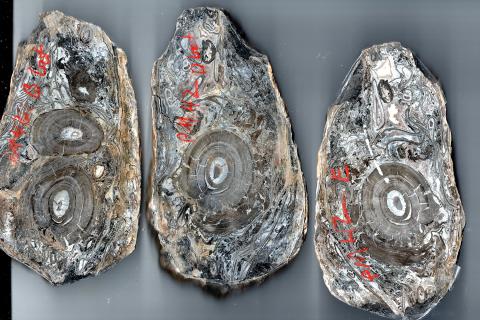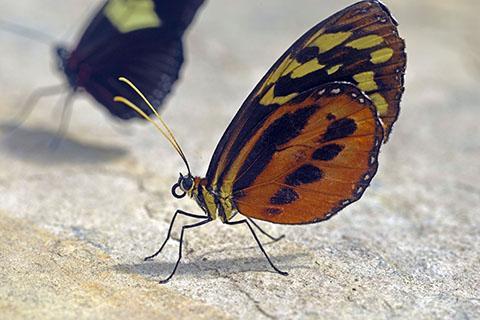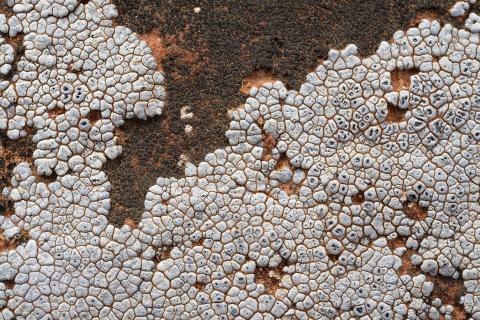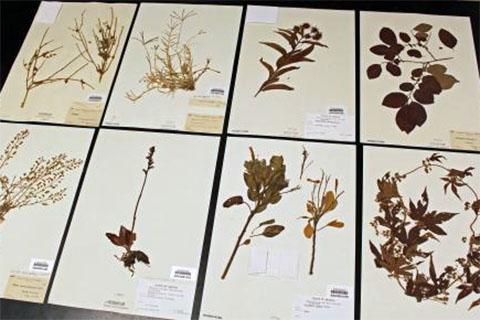With funds provided by a National Science Foundation, extensive collections were made throughout the southwestern United States during the years 1973 to 1975 by D. J. Pinkava, E. Lehto, and D. J. Keil. Aided by another National Science Foundation grant to W. L. Minckley, D. J. Pinkava also conducted a floristic study of the Cuatro Cienegas region of Coahuila, Mexico (Pinkava 1984).
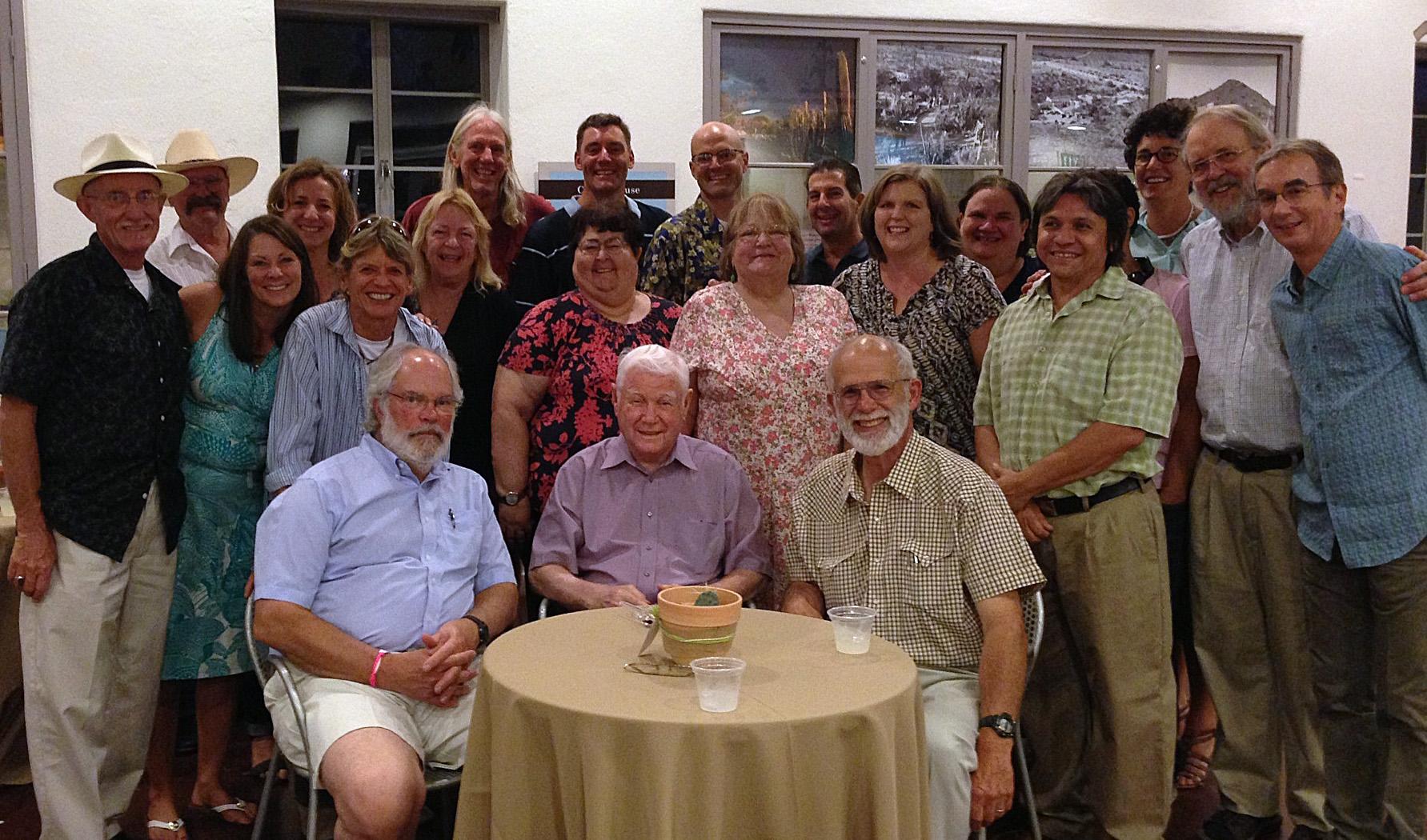
D.J. Pinkava (center) 80th birthday celebration Aug 2013
Steady growth of the ASU Vascular Plant Herbarium occurs every year through the activities of Arizona State University staff, graduate students, and others associated with the herbarium. Botanical explorations in our area of emphasis, the Southwest and northern Mexico continue to reveal new species, state records and other interesting taxa.
The following graduate students of D. J. Pinkava and L. R. Landrum (as committee chair, co-chair, or member) have done floristic or related studies for master's degrees in various parts of Arizona and have added their collections to the herbarium (chronologically): E. Lehto (Lake Pleasant Regional Park, Maricopa Co.); D. J. Keil (White Tank Mountains Regional Park, Maricopa Co.); M. A. Lane (McDowell Mountain Regional Park, Maricopa Co.); E. G. Sundell (Sierra Estrella Regional Park, Maricopa Co.); S. Forbes, (Pinal Mountains, Gila Co.); M. Russo (Castle Dome Mountains, Yuma Co.); T. Reeves (Chiricahua National Monument, Cochise Co.); J. Leithliter (Chiricahua National Wilderness Area, Cochise Co.); G. Marrs-Smith (San Bernadino Ranch, Cochise Co.); W. Johnson (Pinaleno Mountains, Graham Co.); A. Pierce (Buckeye Hills Semi-Regional Park, Maricopa Co.); K. Rice (Superstition Wilderness Area); L. Wolden (Hassayampa River Reserve); G. Imdorf (Sierra Ancha Wilderness Area); J. Buegge (Santa Theresa Mountains, Graham Co.); D. Damrel (ASU Arboretum); S. Doan (Seven Springs Recreation Area, Maricopa Co.); E. Gilbert, (West Fork Oak Creek Canyon, Coconino Co.); E. Makings (San Pedro Riparian National Conservation Area, Cochise Co.), B. Lester (Hummingbird Springs Wilderness Area, Maricopa Co.); D. Jenke (Phoenix Four Rivers, Maricopa Co.); D. Newton (Eagletail Mountains, Yuma-LaPaz Cos.); F. Coburn (Upper Verde River, Yavapai Co.).
Other important collections made by persons who deposited their specimens at the Arizona State University Herbarium but for non-degree studies are: S. Jones (McDowell Mountains, Maricopa Co.); B. Walden (Usery Mountain Park, Maricopa Co.); E. Lehto (Cabeza Prieta Game Range, Yuma, Co.); W. L. Minckley and L. A. McGill (upper reaches of Gila River); R. K. Gierisch, G. K. Brown and B. D. Parfitt (northwestern Arizona north of the Colorado, River, i.e., the Arizona Strip); M. Butterwick and T. Daniel (South Mountain Park, Maricopa Co.); M. Butterwick and B. D. Parfitt (Hualapai Mountains, Mohave Co.).
H. Tate (Peña Blanca Lake area, Santa Cruz Co.); M. Butterwick et al. (Hualapai-Aquarius, Harcuvar, Vulture, and Skull Valley Planning Units); R. L. Burgess (Tonto National Monument, Gila Co.); M. Baker and T. Wright (Camp Wood, Williamson Valley, Yolo North, and Yolo South grazing allotments on the Chino Valley Ranger District, USFS); M. Baker and T. Wright (Apache Creek, Juniper Mesa, Sycamore Canyon, and Woodchute Wilderness areas of Prescott National Forest); J. R. Sutherland (Show Low Lake area); B. D. Parfitt and C. Christy (Coronado National Monument).
2) Collections of Cactaceae
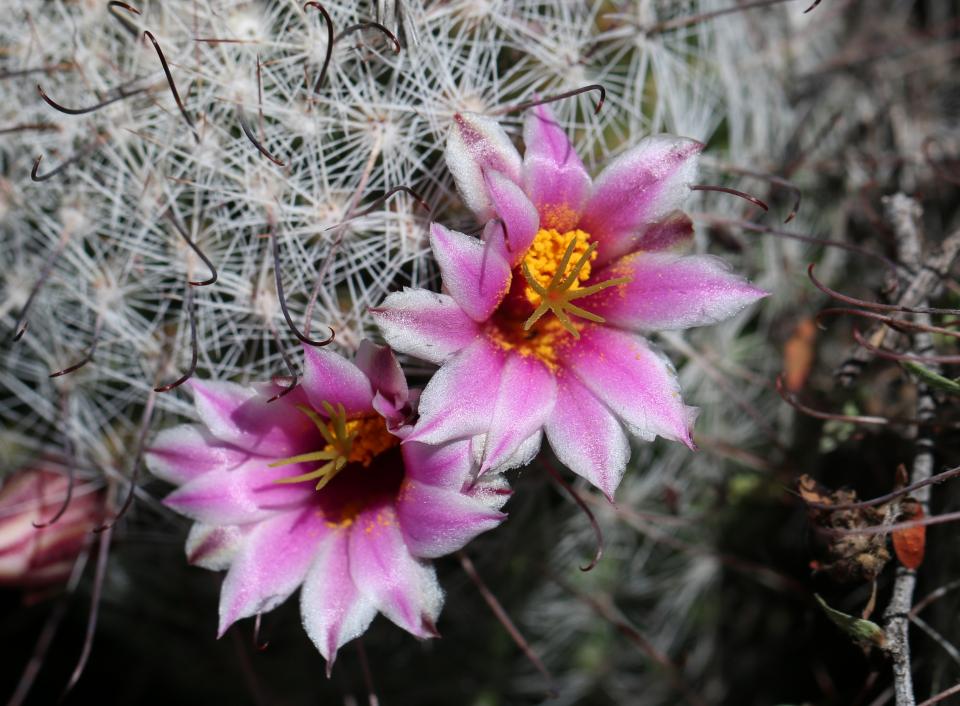
Graham's nipple cactus
Arizona is one of the centers of diversity for Cacti and it follows that our collection of this regionally important group (ca. 5,000 specimens) is among the top 5 in the US and perhaps the best collection of cytological voucher specimens of Cactaceae in the world. Because cacti are not easily collected, there are few institutions that rival our quality holdings, many accompanied by photographs of plants in their natural habitat. ASU's Cactaceae are continually enhanced by the collecting efforts of Mark Baker in particular, as well as the legacy of degree studies of cactus systematics including the following groups: xMyrtgerocactus (L. A. McGill); Opuntia x kelvinensis (M. A. Baker); O. curvospina (B. D. Parfitt); the O. whipplei complex (N. Trushell); fleshy-fruited prickly-pears Opuntia subgen. Opuntia in Arizona (M. G. McLeod); the O. polyacantha complex in western North America (B. Parfitt); the Echinocactus polycephalus complex (M. Chamberland); and Opuntia subgen. Cylindropuntia in Baja California (J. Rebman).
3) Cytological voucher specimens of vascular plants
Over 35 years of publications on chromosome counts listing more than 1800 vouchers have been contributed by D. J. Pinkava and his graduate students including M. A. Baker, G. K. Brown, R. C. Brown, C. Christy, D. J. Keil, B. D. Parfitt, J. P. Rebman, and T. Reeves.
4) Asteraceae
The Asteraceae at ASU are important because of revisionary or monographic studies on following genera conducted by staff and graduate students: Psilostrophe (R. C. Brown, 1977, 1978) Baileya (R. C. Brown and Pinkava, 1974), Platyschkuhria (G. K. Brown, 1983) Haplopappus of South America (G. K. Brown and Clark, 1982), Berlandiera (Pinkava,1967), Hazardia (Clark 1979).
5) Myrtaceae
L. R. Landrum is a specialist in American Myrtaceae and continues to add to the collection through gifts for determination and his travels throughout South America. ASU currently has over 14,000 American Myrtaceae, one of the larger university collections of Myrtaceae in the United States.
6) Collections from Temperate South America, especially Chile
L. R. Landrum participated in the Flora of Chile project, providing treatments of the Berberidaceae and Myrtaceae, and has made numerous trips to Brazil, Chile and Argentina. Thousands of collections have been made and exchanges have been established with MBM, CTES, HUEFS, MO, and other herbaria in order to increase ASU's collection of temperate South American collections. Few herbaria outside of Chile have significant Chilean collections. The ASU collection of Chilean Berberis is probably the best outside of Chile.
Geographic Representation
45% - ARIZONA
25% - REST OF UNITED STATES AND CANADA
25% - AMERICAS SOUTH OF THE UNITED STATES
5% - OLD WORLD AND CULTIVATED

